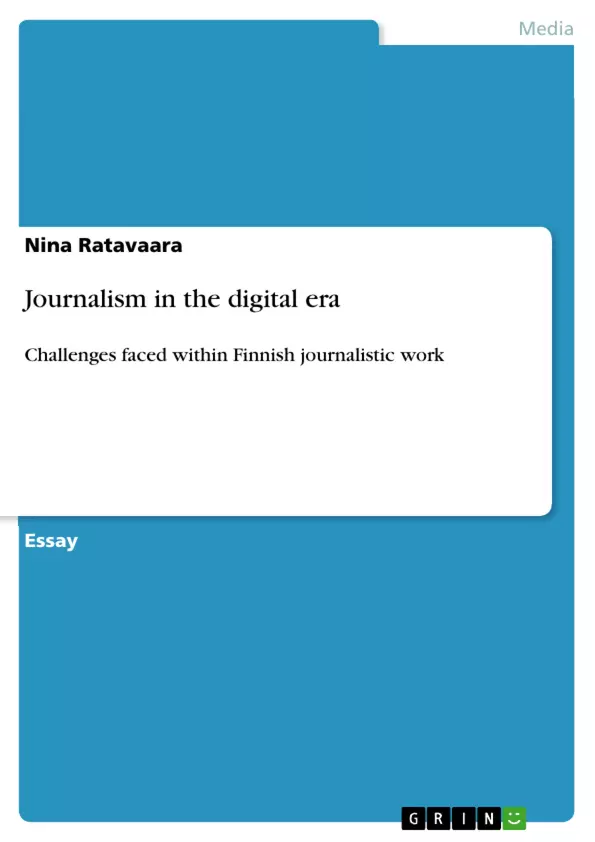Finland belongs to a list of countries that Hallin and Mancini place in the group of the ‘Democratic Cororatist’ model. (quoted after Hovden 2009, p.149; Hujanen 2009, p. 2) The central elements of this group are high newspaper circulation, strong professionalism and state intervention. They rose from a history of “early democratization, consensus-based governments, a history of democratic corporatism and a strong welfare state.” (quoted after Hovden 2009, p.149) These elements show clearly when taking a look at the Finnish history. Newspapers were born as political organs around 1900. 1917 Finland declared its independence and the welfare state has been built up until today. The era of newspapers as political organs ended only at the end of the 1990s and was followed by a non-political news policy. In combination to this change, in the 1950s the development of commercial media markets began and continues until today. One of the consequences of this was that the newspapers owned by media chains have to fulfil profit expectations. (Hujanen 2009, p.2) Finland has had different media eras, but the question is which cycle we are experiencing now? The media landscapes everywhere are moving, being discussed and worried about- therefore it might be the ‘era of change and challenges’. Like Ann Axelsson says, “the only certainty in our industry [the newspaper industry, A/N] is the incertitude.” (Das Magazin 2009)
One major discussion focuses on the role of journalists. Therefore this essay will explore the situation in Finland, focusing on questions and developments introduced by the beginning of the so called ‘digital age’. The core will consist of issues concerning newspaper journalist since the public and scientific discussions concentrate often around the possible death of newspapers and the new requirements for newspaper journalists.
Inhaltsverzeichnis (Table of Contents)
- 1. Introduction.
- 2. Changes and challenges.
- 3. Possible answers.
- 4. Conclusion...
- 5. References
Zielsetzung und Themenschwerpunkte (Objectives and Key Themes)
This essay explores the challenges faced by Finnish journalists in the digital era. It examines how the internet and related developments have impacted the journalistic landscape and forced journalists to adapt their practices and self-image.
- The changing media landscape and the impact of the internet on news consumption and journalistic practices.
- The challenges of decreasing readership, audience fragmentation, and new reading traditions.
- The evolving role of journalists in a digital age, including the need for new skills and the pressure to adapt to changing audience expectations.
- The tension between market-oriented journalism and societal journalism, and the need for journalists to find a balance between profit expectations and their commitment to public service.
- The importance of journalistic values, including objectivity, autonomy, and ethics, in the face of new challenges and opportunities.
Zusammenfassung der Kapitel (Chapter Summaries)
The first chapter introduces the Finnish media landscape, placing it within the 'Democratic Corporatist' model. It discusses the historical development of newspapers in Finland, the rise of commercial media markets, and the increasing influence of the internet.
The second chapter explores the changes and challenges facing Finnish journalists in the digital era. These include decreasing readership, audience fragmentation, new reading traditions, and the rise of user-generated content. The chapter also examines the impact of these changes on the professional identity and work routines of journalists.
Schlüsselwörter (Keywords)
This essay focuses on the key concepts of journalism in the digital era, particularly in Finland. Key terms include: digital era, Finnish media landscape, journalistic challenges, audience fragmentation, new reading traditions, user-generated content, journalistic identity, market-oriented journalism, societal journalism, and online journalism practices.
- Arbeit zitieren
- Nina Ratavaara (Autor:in), 2009, Journalism in the digital era, München, GRIN Verlag, https://www.grin.com/document/178935



